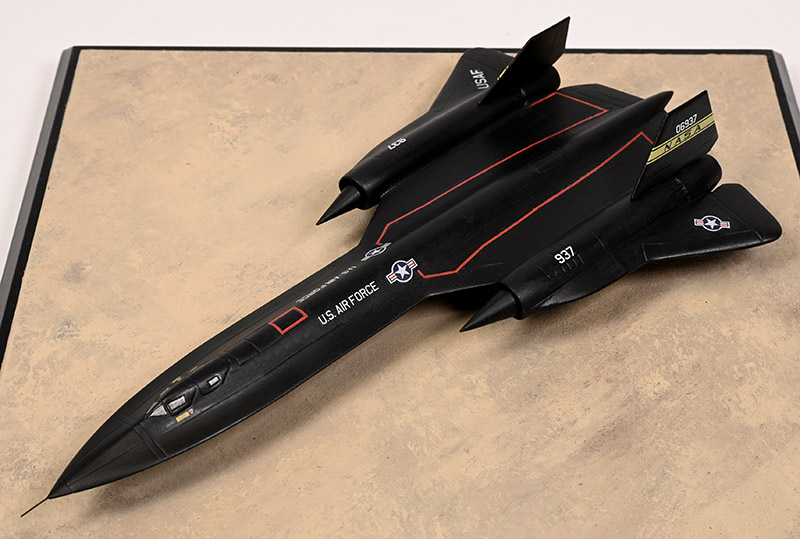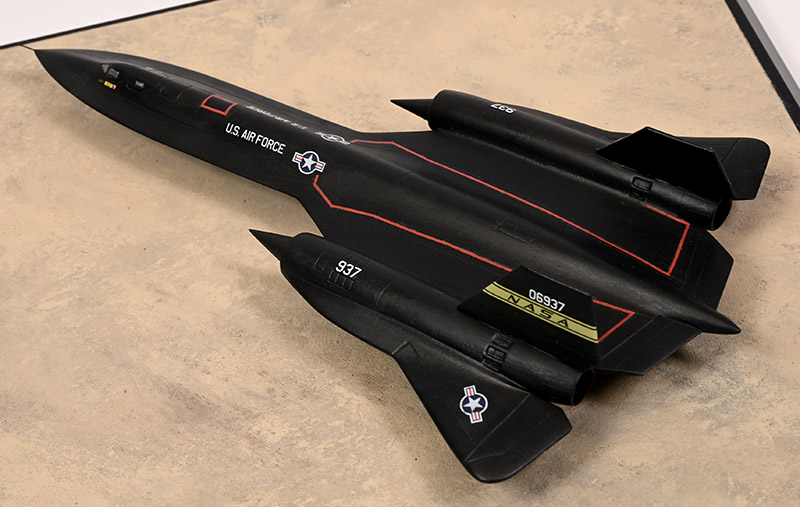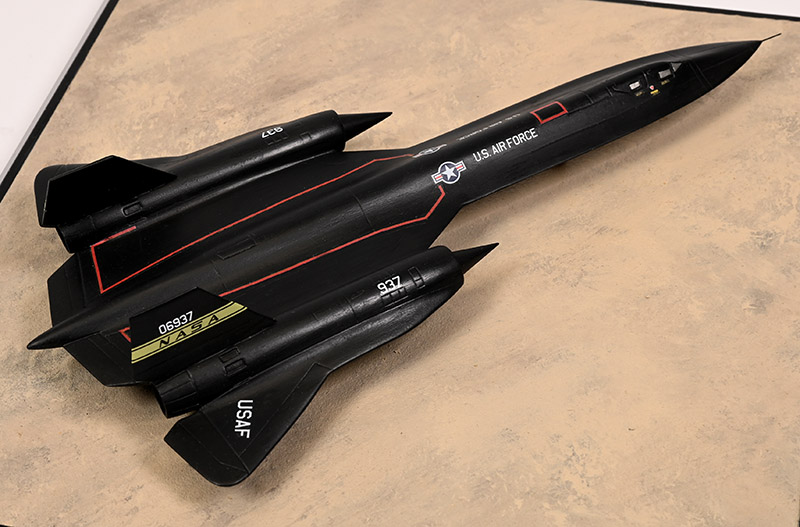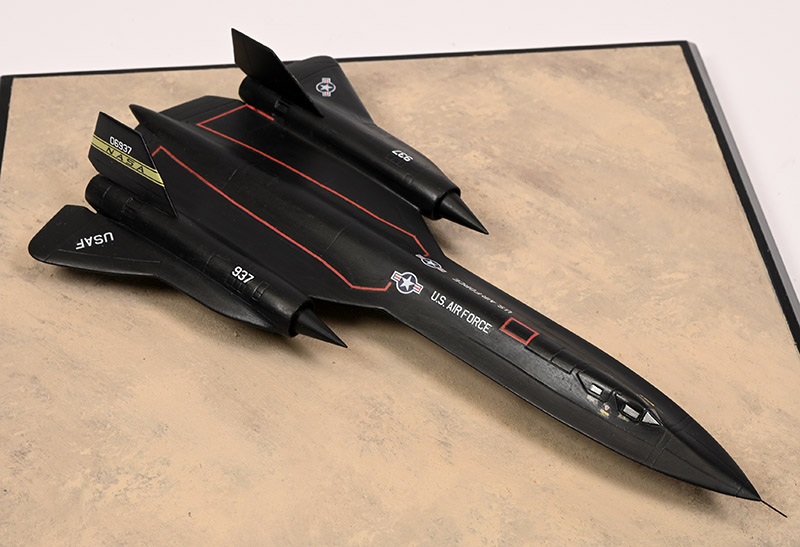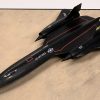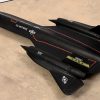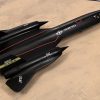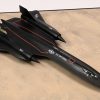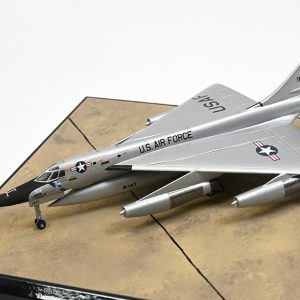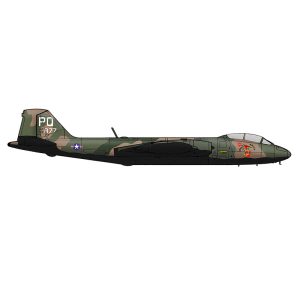Lockheed SR-71A Blackbird
SR-71A serial no. 64-17951, YF-12C, NASA tail no. 06937
The original Blackbird was designated the A-12 and made its first flight on April 30, 1962. The single-seat A-12 soon evolved into the larger SR-71, which added a second seat for a Reconnaissance Systems Officer and carried more fuel than the A-12. The SR-71’s first flight was on December 22, 1964.
Kelly Johnson, one of the preeminent aircraft designers of the twentieth century, and his Skunk Works team had a track record of delivering novel technologies on incredibly short, strategically critical deadlines. This new aircraft was in a different category from anything that had come before. “Everything had to be invented. Everything,” Johnson recalled.
The speed of the new aircraft was to exceed 2,000 mph. Other planes of the era could, in theory, approximate that speed but only in short, after-burner-driven bursts. This new plane needed to maintain a record-setting speed for hours at a time. At such velocity, friction with the atmosphere generates temperatures that would melt the conventional airframe. With anticipated temperatures on the aircraft’s leading edges exceeding 1,000 degrees Fahrenheit, dealing with the heat raised a host of seemingly insurmountable design and material challenges. Titanium alloy was the only option for the airframe, providing the strength of stainless steel, a relatively light weight, and durability at the excessive temperatures. Titanium, however, proved to be a particularly sensitive material from which to build an airplane. The brittle alloy shattered if mishandled, which meant great frustration on the Skunk Works assembly line, and new training classes for Lockheed’s machinists. Conventional cadmium-plated steel tools, it was soon learned, embrittled the titanium on contact; so new tools were designed and fabricated, themselves made out of titanium. While friction would generate incredible heat at the leading edges of the aircraft, the ambient temperature outside the cockpit window would be -60 degrees Fahrenheit. Since black paint both emits and absorbs heat, the aircraft was painted black, and soon earned its name: “Blackbird.”
Reducing the size of the Blackbird’s radar image meant an even further reduction in the likelihood that the plane would be perceived and shot down. Though the initial test results were good, rumours of Soviet radar advances led the U.S. government to ask for an even smaller radar profile. Surfaces had to be redesigned to avoid reflecting radar signals, the engines moved to a subtler mid-wing position, and a radar-absorbing element was added to the paint. Then a full-scale model of the Blackbird was hoisted on a pylon for radar testing at a Skunk Works’ secret location in the Nevada desert. With tests carefully scheduled to avoid Soviet satellite observations, the results were impressive: The Blackbird model, more than 100 feet in length, would appear on Soviet radar as bigger than a bird but smaller than a man. The team had succeeded in reducing radar cross section by 90 percent.
The records set are many. The Blackbird was and remains the world’s fastest and highest-flying manned aircraft.
Airframe, serial no. 64-17951, the second production SR-71A was given the NASA number 06937 which was identical to that of an A 12 airframe also numbered 06937. The reason for this bit of subterfuge lay in the fact that NASA, while flying the YF-12A interceptor version of the aircraft, was not officially allowed to possess the strategic reconnaissance version for some time. The tail number 06937 was selected by NASA because it followed in the sequence of tail numbers assigned to the three existing YF-12A aircraft: 06934, 06935, and 06936. NASA’s SR-71 06937 was modified with YF-12A inlets and engines.


